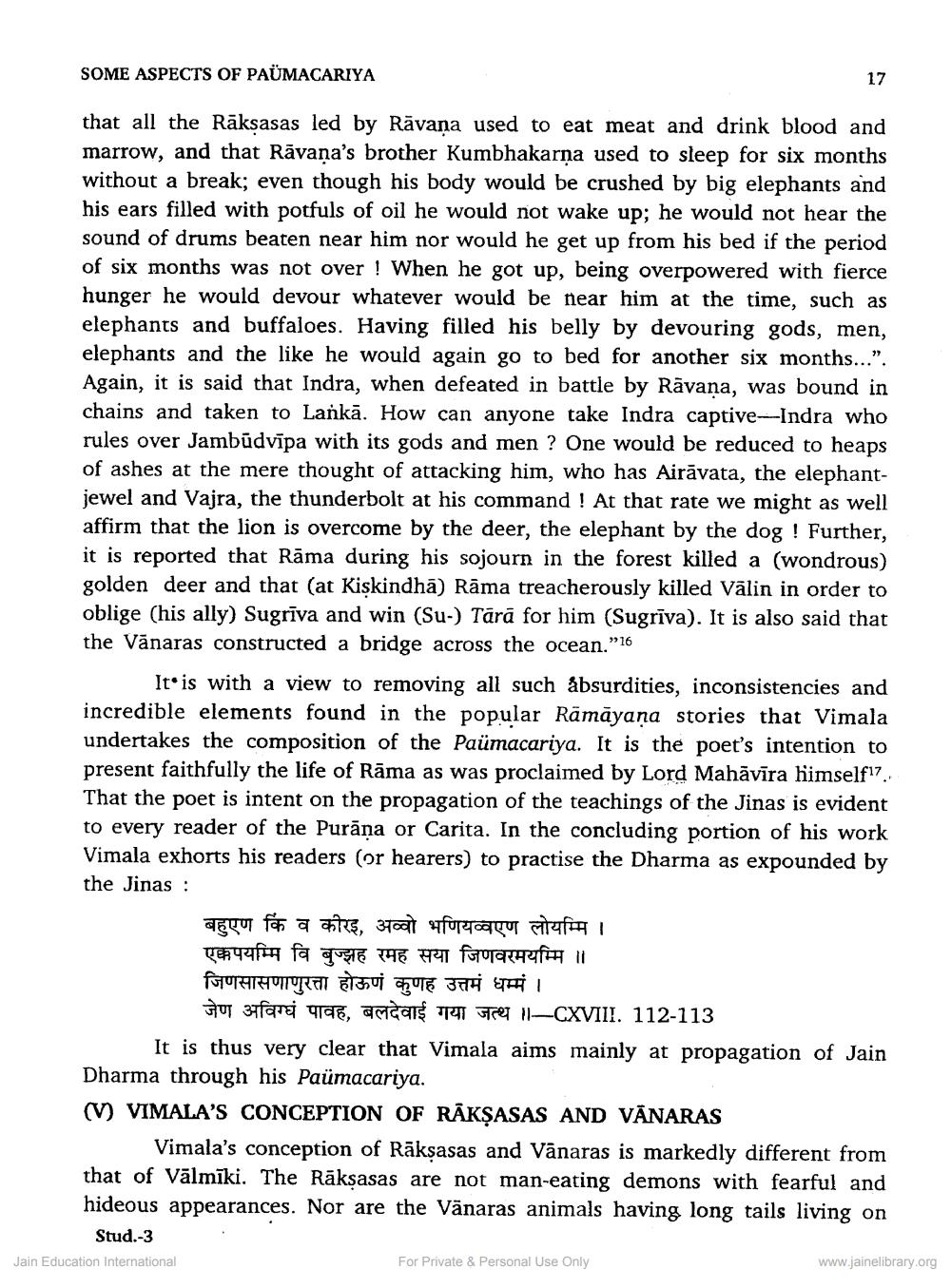________________
SOME ASPECTS OF PAUMACARIYA
that all the Räkṣasas led by Ravana used to eat meat and drink blood and marrow, and that Ravana's brother Kumbhakarna used to sleep for six months without a break; even though his body would be crushed by big elephants and his ears filled with potfuls of oil he would not wake up; he would not hear the sound of drums beaten near him nor would he get up from his bed if the period of six months was not over 1 When he got up, being overpowered with fierce hunger he would devour whatever would be near him at the time, such as elephants and buffaloes. Having filled his belly by devouring gods, men, elephants and the like he would again go to bed for another six months...". Again, it is said that Indra, when defeated in battle by Ravana, was bound in chains and taken to Lanka. How can anyone take Indra captive-Indra who rules over Jambudvipa with its gods and men? One would be reduced to heaps of ashes at the mere thought of attacking him, who has Airävata, the elephantjewel and Vajra, the thunderbolt at his command ! At that rate we might as well affirm that the lion is overcome by the deer, the elephant by the dog! Further, it is reported that Rama during his sojourn in the forest killed a (wondrous) golden deer and that (at Kişkindhä) Räma treacherously killed Välin in order to oblige (his ally) Sugrīva and win (Su-) Tärä for him (Sugriva). It is also said that the Vanaras constructed a bridge across the ocean."16
It is with a view to removing all such absurdities, inconsistencies and incredible elements found in the popular Rämāyaṇa stories that Vimala undertakes the composition of the Paümacariya. It is the poet's intention to present faithfully the life of Rāma as was proclaimed by Lord Mahāvīra himself17. That the poet is intent on the propagation of the teachings of the Jinas is evident to every reader of the Purana or Carita. In the concluding portion of his work Vimala exhorts his readers (or hearers) to practise the Dharma as expounded by the Jinas:
बहुएण किं व कीरइ, अव्वो भणियव्वएण लोयम्मि । एकपयम्मि वि बुज्झह रमह सया जिणवरमयम्मि ॥ जिणसासणाणुरत्ता होऊणं कुणह उत्तमं धम्मं ।
जेण अविग्धं पावह, बलदेवाई गया जत्थ ॥CXVII. 112-113
17
It is thus very clear that Vimala aims mainly at propagation of Jain Dharma through his Paümacariya.
(V) VIMALA'S CONCEPTION OF RAKSASAS AND VÄNARAS
Vimala's conception of Räkṣasas and Vanaras is markedly different from that of Valmiki. The Räkṣasas are not man-eating demons with fearful and hideous appearances. Nor are the Vänaras animals having long tails living on
Stud.-3
Jain Education International
For Private & Personal Use Only
www.jainelibrary.org




